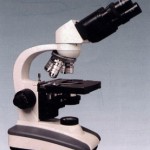 Yesterday, I was on-line looking at stereo microscopes on an auction site and found several flat field microscopes with “binocular” heads listed as stereo microscopes. It is extremely frustrating to me to see this error –and I want to make sure that consumers understand that these two microscopes are not interchangeable. A stereo microscope provides a 3D image and a Binocular flat field microscope provides a flat image. Please know that having two eyepieces does not make a stereo microscope.
Yesterday, I was on-line looking at stereo microscopes on an auction site and found several flat field microscopes with “binocular” heads listed as stereo microscopes. It is extremely frustrating to me to see this error –and I want to make sure that consumers understand that these two microscopes are not interchangeable. A stereo microscope provides a 3D image and a Binocular flat field microscope provides a flat image. Please know that having two eyepieces does not make a stereo microscope.
A stereo microscope utilizes two separate optical paths, in other words there is a separate “microscope” for each eye. These optical paths are inclined at a six degree angle towards each other so that the user can see a portion of the sides of the specimen as well as the top. This separation of views allows us to perceive depth and see in true 3D.
Stereo microscopes come in many different forms but generally have a magnification range of 7x to 45x are used for applications such as engraving, watch repair and inspection of manufactured parts. They are also commonly used by mineral, stamp and coin collectors.
Flat field microscopes (also known as compound) use a single objective lens to look straight down on a specimen and provides a flat (1 dimensional) image. It may use a single eyepiece or binocular viewer but still only has a single optical path. These microscopes are used with glass slides starting at 40x to 1,000x magnification. The focus depth of field is limited to very flat specimens which makes a flat field scope virtually useless for anything except biological applications. The only real advantage to the flat field scope is very high resolution and magnification capabilities.
Generally, if a microscope has a nose piece with objectives it is a flat field/compound microscope. A typical flat field /compound microscope looks like the instrument shown below.
Absolute Clarity & Calibration offers a durable line of high quality, cost effective import microscope systems to meet your requirements. Give us a call and let us help you determine what microscope that is.
Educating the user is half our job!
